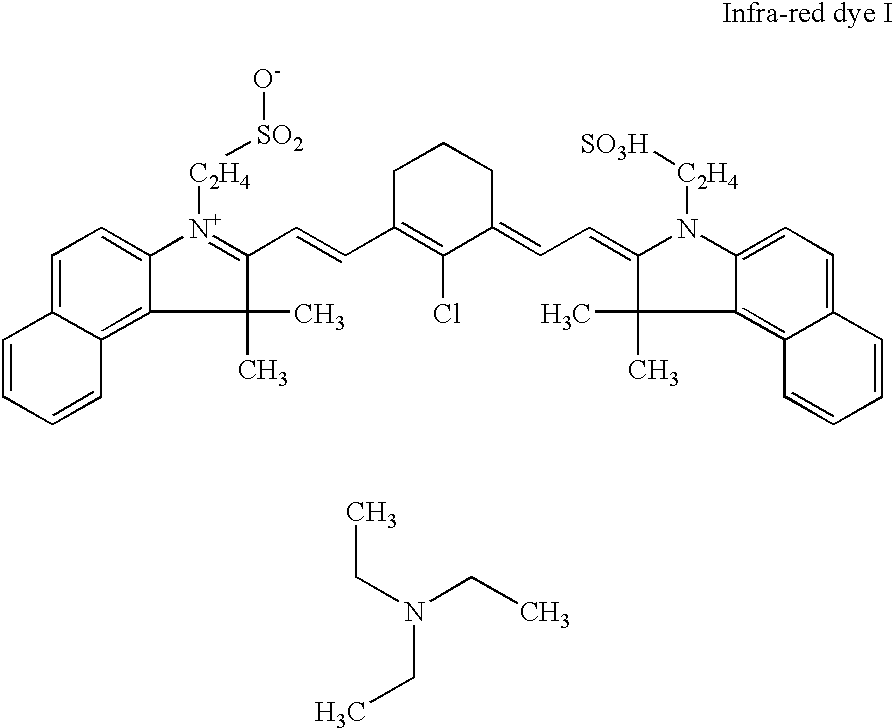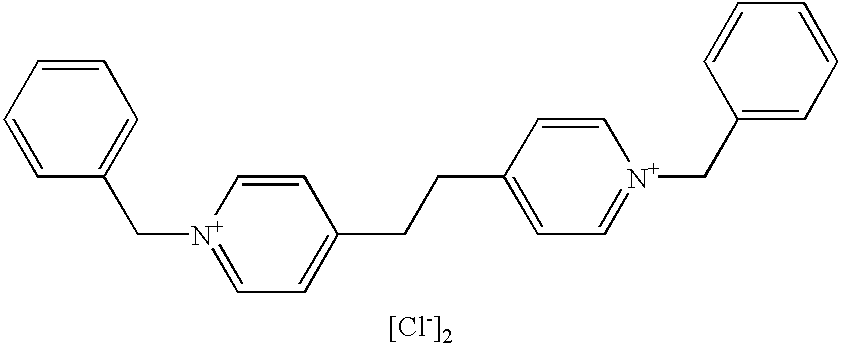Method for the preparation of a lithographic printing plate
a technology of lithographic printing and printing plate, which is applied in the field of method for the preparation of lithographic printing plate, can solve the problems of large number of new computer-to-plate system, large number of large-scale computer-to-plate system, and high cos
- Summary
- Abstract
- Description
- Claims
- Application Information
AI Technical Summary
Benefits of technology
Problems solved by technology
Method used
Image
Examples
example 1
[0103] Preparation of the Printing Plate Precursor
[0104] A 0.30 mm thick aluminum foil was degreased by immersing the foil in an aqueous solution containing 5 g / l of sodium hydroxide at 50.degree. C. and rinsed with demineralized water. The foil was then electrochemically grained using an alternating current in an aqueous solution containing 4 g / l of hydrochloric acid, 4 g / l of hydroboric acid and 5 g / l of aluminum ions at a temperature of 35.degree. C. and a current density of 1200 A / m.sup.2 to form a surface topography with an average center-line roughness Ra of 0.5 mm.
[0105] After rinsing with demineralized water the aluminum foil was then etched with an aqueous solution containing 300 g / l of sulphuric acid at 60.degree. C. for 180 seconds and rinsed with demineralized water at 25.degree. C. for 30 seconds.
[0106] The foil was subsequently subjected to anodic oxidation in an aqueous solution containing 200 g / l of sulphuric acid at a temperature of 45.degree. C., a voltage of about...
example 2
[0115] Preparation of the Printing Plate Precursor
[0116] The following coating composition was coated on the lithographic support described in example 1 at a wet coverage of 30 g / m.sup.2, and dried at 35.degree. C.
[0117] Preparation of the coating composition:
[0118] To 7.5 g of a 20% w / w dispersion of polystyrene (particle diameter of 60 nm) stabilized with a surfactant (1.5% w / w vs. polymer) in deionized water was added 20 g of a 1% w / w solution of infra-red dye I (see formula below).
[0119] To the above obtained solution was added 66.5 g deionized water and 6 g of a 5% w / w solution of CARBOPOL WS801 (polyacrylic acid commercially available from Goodrich). 2
[0120] Preparation of the Fluid
[0121] The fluid was prepared by dissolving 8 g of A-1 in a mixture of 90 g of water and 10 g of isopropanol. After filtering the solution was loaded into the ink cartridge of an Epson Stylus Color 900 ink-jet printer, the cartridge having previously been emptied and cleaned.
[0122] A test pattern co...
examples 3 to 12
[0124] The insolubilizing capacity of several insolubilizing compounds (see formulas below) was tested using the following procedure.
[0125] The insolubilizing compound was dissolved in a solvent carrier at a concentration of 1%. Next a 6 .mu.l droplet of each fluid was jetted on the printing plate precursor as defined in example 1. The droplet was dried at room temperature to remove the solvent carrier of the fluid. Next the plate was mounted on the press and the printing procedure as described in example 1 was used.
[0126] If the droplet-area of the image forming layer is ink-accepting, the compound is suitable for use in this invention.
2 Droplet-area remains on the lithographic support and Example Compound accepts ink 3 Flexo Blue 630 Yes 4 Crystal Violet Yes 5 Acridine Orange Base Yes 6 A-1 Yes 7 A-2 Yes 8 A-3 Yes 9 A-4 Yes 10 A-5 Yes 11 A-6 Yes 12 A-7 Yes Formulas of compounds A-1 to A-7 A-1 3 A-2 4 A-3 5 A-4 6 A-5 7 A-6 8 A-7 9
PUM
| Property | Measurement | Unit |
|---|---|---|
| temperature | aaaaa | aaaaa |
| particle size | aaaaa | aaaaa |
| particle size | aaaaa | aaaaa |
Abstract
Description
Claims
Application Information
 Login to View More
Login to View More - R&D
- Intellectual Property
- Life Sciences
- Materials
- Tech Scout
- Unparalleled Data Quality
- Higher Quality Content
- 60% Fewer Hallucinations
Browse by: Latest US Patents, China's latest patents, Technical Efficacy Thesaurus, Application Domain, Technology Topic, Popular Technical Reports.
© 2025 PatSnap. All rights reserved.Legal|Privacy policy|Modern Slavery Act Transparency Statement|Sitemap|About US| Contact US: help@patsnap.com



